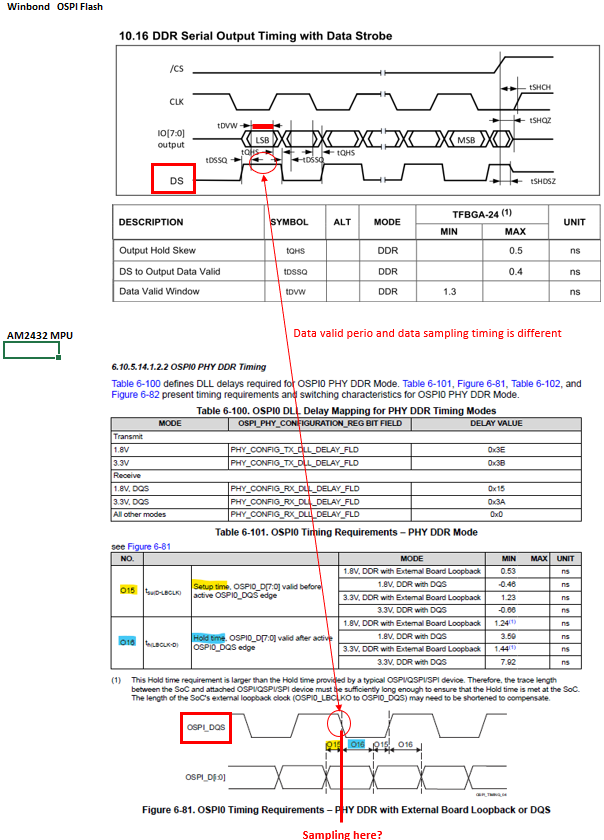Tool/software:
Hi,
Customer is asking the sampling timing of input data for OSPI DDR mode.
Can you see the figure as below?
For Winbond OSPI Flash (W35T25NW) , data valid period is when DQS is flat.
On the other hand, for AM2432, data sampling timing looks like at the edge of DQS.
- Is it possible to communicate between these 2 device?
- Is there any way to change sampling timing for AM2432?

Best Regards,
Kasai



